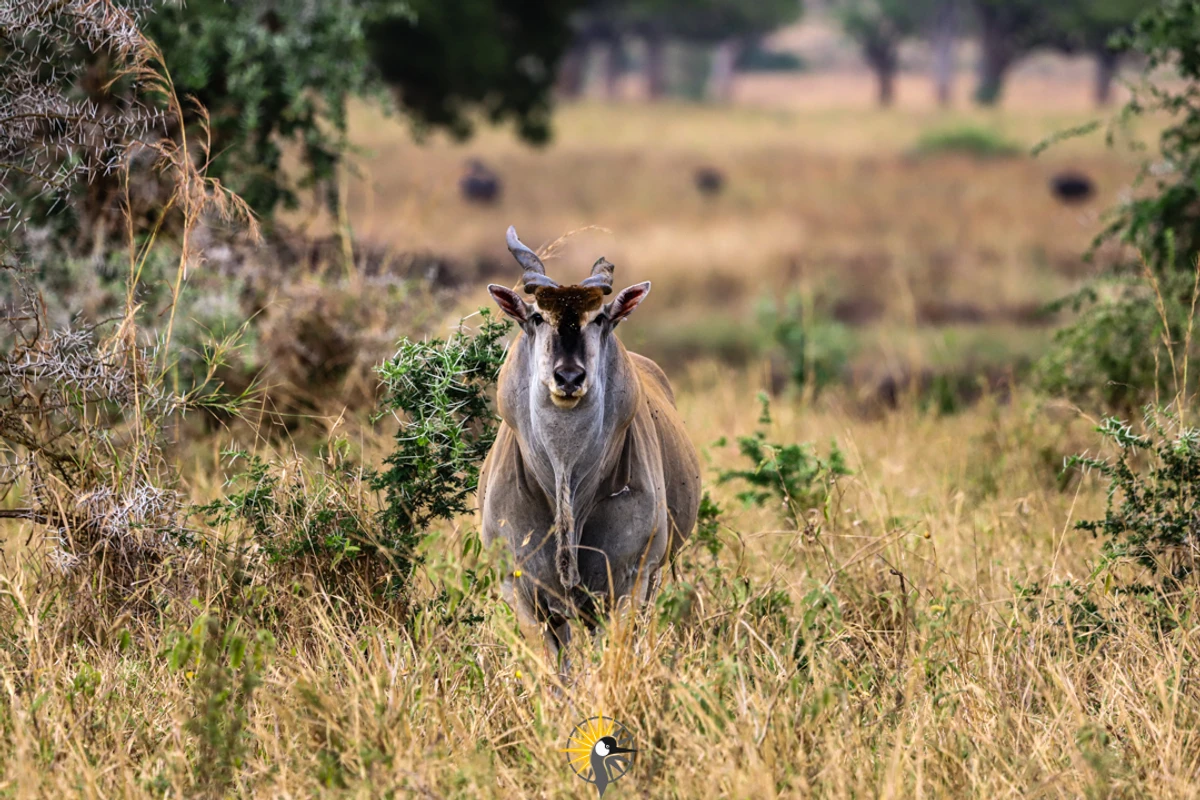When you think of African safaris, the usual icons like lions, elephants, and zebras often take center stage. However, nestled in the grasslands, savannas, and hills of East Africa roams the majestic eland – Africa’s largest antelope. A symbol of grace and resilience, elands offer wildlife enthusiasts a chance to appreciate the quieter, often-overlooked giants of the wild. This article dives deep into the world of elands in East Africa, highlighting where to see them, their unique characteristics, and why they deserve a place on your safari checklist.
Meet the Eland
Elands are the largest species of antelope, belonging to the genus Taurotragus. East Africa is home to the common eland (Taurotragus oryx), which can weigh up to 900 kilograms (2,000 pounds) and stand over 1.6 meters tall at the shoulder. Despite their size, these antelopes move with remarkable agility and elegance, often blending seamlessly into their surroundings.
Physical Characteristics
- Size: Elands are massive yet surprisingly agile creatures. Adult males are larger than females and develop a thick neck dewlap and spiraled horns, which can grow up to 1 meter in length.
- Appearance: They sport a light brown or tawny coat with faint white stripes, especially noticeable in younger individuals. Mature males tend to turn bluish-gray as they age.
- Adaptations: Elands are built for survival. They can endure harsh, dry environments, extracting moisture from plants and going days without drinking water.
Elands are a symbol of resilience in the wild, perfectly adapted to both the arid landscapes and the lush savannas of East Africa.
Behavior and lifestyle of Elands
Elands are primarily herbivorous, feeding on grasses, leaves, fruits, and shrubs. They are seasonal feeders, adjusting their diet depending on the availability of vegetation. Their grazing habits make them essential to the ecosystem, helping to regulate plant growth.
Social dynamics
Elands are social animals, often found in herds of 10-20 individuals. During the dry season, herds may congregate into larger groups, sometimes exceeding 50 members.
- Herd Structure: Herds consist of females and their young, with males typically forming bachelor groups or living solitary lives.
- Communication: Interestingly, adult elands produce a distinct clicking sound as they walk. This sound, thought to be caused by their tendons, may help herd members communicate or serve as a warning to predators.
Despite their size, elands are incredibly cautious and prefer to flee at the first sign of danger. They can sprint short distances at surprising speeds and leap over fences or obstacles as high as 2.5 meters.
Where to see Elands in East Africa
East Africa is a prime destination for wildlife safaris, and elands can be spotted across some of the region’s most spectacular national parks and reserves. Below are the best locations to encounter these magnificent antelopes:
1. Uganda, Lake Mburo National Park
Lake Mburo National Park is one of the best places in Uganda to see elands. The park’s open savanna and acacia woodlands create the perfect habitat for these antelopes. While exploring the park, you’re likely to come across herds of elands grazing peacefully, particularly in the early morning or late afternoon.
- Highlight: Lake Mburo is Uganda’s smallest savanna park, offering an intimate safari experience and excellent opportunities for walking safaris, which bring you closer to the elands.
2. Uganda, Kidepo Valley National Park
Tucked away in the far northeastern corner of Uganda, Kidepo Valley National Park is a hidden gem for wildlife enthusiasts. Its vast, untouched wilderness is home to a thriving population of elands.
- Highlight: Kidepo’s remoteness and dramatic landscapes make it one of Africa’s most beautiful parks. Spotting elands against the backdrop of rugged hills is a sight to behold.
3. Kenya, Masai Mara National Reserve
The Masai Mara, famous for its annual wildebeest migration, is also an excellent destination to observe elands. While exploring the reserve’s rolling plains, keep an eye out for elands grazing alongside zebras, giraffes, and other herbivores.
- Highlight: The Masai Mara’s open savanna provides perfect visibility, making it easier to spot these elusive giants.
4. Kenya, Tsavo National Park
Tsavo East and Tsavo West National Parks, known for their diverse landscapes and abundant wildlife, are home to healthy populations of elands. In Tsavo, elands often inhabit wooded areas and open plains.
- Highlight: The vastness of Tsavo offers a sense of adventure and solitude, with plenty of opportunities to observe elands in their natural habitat.
5. Tanzania, Serengeti National Park
The Serengeti’s expansive plains are a haven for wildlife, including elands. During the dry season, elands migrate alongside other herbivores in search of fresh grazing areas.
- Highlight: The Serengeti’s endless horizons make for stunning wildlife photography, and seeing elands in this iconic park is a memory you won’t forget.
6. Rwanda, Akagera National Park
Akagera National Park, located in eastern Rwanda, is a success story of wildlife conservation. The park’s mix of savannas, woodlands, and wetlands provides a suitable habitat for elands.
- Highlight: Akagera’s diverse landscapes and growing wildlife populations offer a unique safari experience, with elands being one of the key species to watch for.
Their role in East Africa’s ecosystem
Elands play a vital role in maintaining the ecological balance of East Africa’s grasslands and woodlands. As grazers, they help control vegetation growth, which in turn benefits other wildlife. Their seasonal movements also aid in seed dispersal, promoting the regeneration of plant species.
Furthermore, elands are a valuable indicator of ecosystem health. Their presence signifies a well-preserved habitat, making them an important species for conservation efforts.
Conservation challenges and efforts
While elands are not currently classified as endangered, they face growing threats across East Africa, including:
- Habitat Loss: Expanding human settlements and agriculture are reducing their natural habitats.
- Poaching: Elands are hunted for their meat, hides, and horns.
- Climate Change: Changing weather patterns are affecting the availability of grazing areas.
Conservation organizations and governments in East Africa are working tirelessly to protect elands through anti-poaching initiatives, habitat restoration, and sustainable tourism. By visiting national parks and supporting conservation-focused safari operators, travelers can contribute to these efforts.
Tips for safari enthusiasts
If you’re planning a safari to East Africa, here are some tips to increase your chances of spotting elands:
- Early Mornings and Late Afternoons: Elands are most active during cooler parts of the day.
- Opt for Guided Safaris: Local guides know the best spots and behaviors to look for.
- Stay Patient: Elands are shy creatures and may require some patience to observe.
- Bring Binoculars and a Camera: Capture their beauty from a distance without disturbing them.
Final thoughts
The eland may not always steal the spotlight, but its quiet elegance and resilience make it one of East Africa’s most fascinating creatures. Whether you’re trekking through Uganda’s Kidepo Valley, marveling at the plains of the Serengeti, or exploring Rwanda’s Akagera, encountering an eland in the wild is a truly special experience.
As you plan your East African safari, be sure to include these gentle giants on your wildlife checklist. Not only will you witness one of nature’s most extraordinary animals, but you’ll also gain a deeper appreciation for the diverse ecosystems that make East Africa a premier safari destination.









